Magnetic flux density in the apartment
Transformer substations located close to the living areas could induce high long-term exposures to extremely low frequency magnetic fields of nearby inhabitants. Some of the researches have shown increased risk to childhood leukemia associated with the long term exposure to the elevated levels of magnetic fields.

With the increasing public interest, prudent avoidance and good practice it is becoming more and more important to minimize the exposure of the nearby inhabitants.
The most cost efficient way of achieving this goal is to include the magnetic field mitigation in the early stage of the planning and construction/reconstruction process of each transformer substation.
Using numerical modeling we studied different variants of reconstruction of a typical transformer substation located in the basement of a block of flats with a living room located right above the transformer. To obtain a comprehensive snapshot of current situation before the reconstruction we performed detailed spot and 24-hour measurements of magnetic flux densities.
Based on the results of the numerical modeling we proposed the optimum and cost effective reconstruction plan.
After the reconstruction, numerical results were evaluated by the comparison of the numerical results with the results of the measurements after the reconstruction and numerically predicted 10-fold reduction factor of the highest values of the magnetic field was confirmed.
Contents:
- Introduction
- Materials and methods
- Results
- Discussion and conclusions
Introduction
International Agency for Research on Cancer included extremely low frequency (ELF) magnetic field among the possibly carcinogenic factors for humans [1].
This decision is based on the results of two studies [2, 3], which showed that elevated 24 hours averaged values of ELF magnetic field (<0.3-0.4 μT) do increase the risk of childhood leukemia but the biological mechanisms of this risk remain un-known [1, 4, 5, 6].
Minimization of the magnetic field is possible either by moving all the parts with high currents away from the apartments, by changing the geometry of the conductors, especially the low voltage (LV) busbar, by replacing components of the TS (with components with lower emissions) and finally it is possible to shield the nearby apartments with materials with either high permeability or high conductivity.
Materials and methods
Situation
Typical TS with nominal power 630 kVA, nominal voltage 10/0.4 kV is located in the basement of the residential apartment building. In the first room there is transformer (Figure 1) whereas in the second one both 20 kV and low voltage switchgear is located.
We were contacted by the owner of the apartment above the TS to estimate the field levels inside the apartment. First measurements shoved magnetic flux density up to values of 15 μT inside the apartment above the TS.
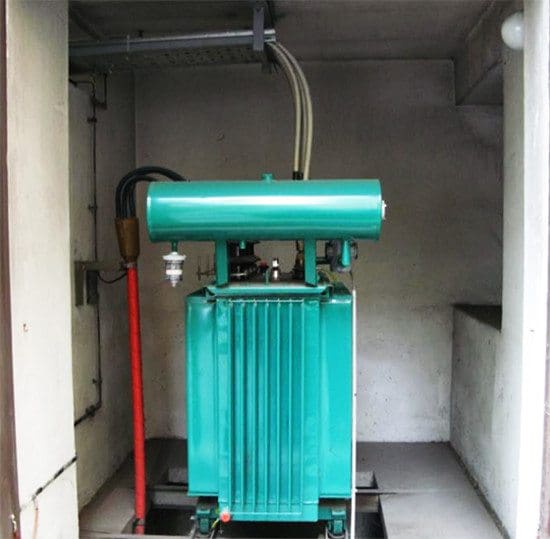

Measurements
Magnetic field is linearly correlated to the actual current load, but this can vary during the day depending on the present use.
To obtain the detailed snapshot of the magnetic field in the apartment above the TS it is therefore not enough to make only spot measurements, but also 24-hour measurements to evaluate the time variability of the magnetic field and determine worst case condition.


For spot measurements we have used Wandel & Goltermann EM field analyzer EFA-3 with the B field probe. For 24-hour measurements we have used automatic measurement station PMM 8055 which measures the magnetic flux density continuously 24 hours per day.
It consists of measurement probe for ELF magnetic flux density HP-051, control unit with the GSM modem to send the measurements from the measurement station to the server connected to the internet, housing with solar cells and accumulator. After the data are automatically transferred to the server, they could be viewed by everyone through an internet application.
According to the Slovenian legislation and the international standards (IEC 61786) the magnetic flux density is measured at the height of 1 or 1.5 m above the ground. But in the apartment, it is not uncommon that the children have their beds on the floor or do they play on the floor and with measurements 1 m above the ground the exposure would be greatly underestimated.
Therefore all the measurements – spot and continuous 24-hour were taken at the height of 0.2 m above the ground.
Numerical calculations
We used program package Narda EFC-400EP for numerical modeling of the magnetic flux density in the vicinity of the TS. It is based on segmentation method where each conductor is presented with finite segments.
Corresponding material and electromagnetic characteristics are assigned to all the segments and the resulting magnetic field is the sum of the contributions of all the segments.
Results
Results of spot measurements
Spot measurements were carried out on the 22 of October 2008 between the 10.30 and 11.30. Measurements were taken on 15 locations inside the TS as well as on 17 locations in the apartment above the TS. Measurement results in the apartment together with the locations are shown in Table 1. Based on the data from electric distribution company the value of the current in the LV busbar during measurements was ≈100 A.
Table 1 – Measured values of magnetic flux density in apartment above TS


Results of continuous 24-hour measurements
Continuous 24-hour measurements were carried out first time between the beginning of December 2007 and the end of January 2008 and second time between the beginning of spot measurements (22 October 2008) and 6 December 2008.
The highest measured magnetic flux density was 15.6 μT with the highest 24-hour average of 9.4 μT. Based on the results of continuous measurements we estimated the real worst case load of the TS.
Numerical modeling
To verify our numerical model of the TS we compared measured and calculated results under the same load conditions at the same locations (Table 2) and it could be seen that both values agree well. Small differences are possible due to different factors (simplification of the model, changes of the load of the TS…).
We made separate calculations for different parts of TS to evaluate which parts are the most critical and identified LV busbar, which is fixed on the ceiling of the TS and therefore the distance between the LV busbar and the floor of the above apartment is only 0.5 m. Other important sources are also switchgear and transformer.
Based on this findings we numerically analyzed the re-construction of the TS with following modifications:
- Removing LV busbar, new LV busbar located under the floor of the TS;
- Change of the switchgear, since it is already old, with a new, which should be as low as possible;
- Proper design and realizations of all the busbars in the TS (all cables close together and arranged in the triangle, as short busbars as possible, especially parts of them which are higher than the floor of the TS).
- We propose transformer to remain, since it was replaced few years ago.
Table 2 – Comparison of measured and calculated magnetic flux density inside the apartment above the TS


From the results in Table 3 and Figure 2 to 5 we can see that the reconstruction will lower the maximum value of the magnetic flux density for about 10 times.


Magnetic flux density before and after reconstruction
Results of the numerical calculation of the magnetic flux density in the apartment at the height of 0.2 m above the floor before (left) and after the reconstruction (right). The current in the LV busbar is 100 A.


Results of the numerical calculation of the magnetic flux density in the apartment at the height of 0.2 m above the floor before (left) and after the reconstruction (right). The current in the LV busbar is 909 A.


MAGNETIC FIELD OF TRANSFORMER SUBSTATIONS
Results of the numerical calculation of the magnetic flux density in vertical plane through LV busbar before (left) and after the reconstruction (right). The current in the LV busbar is 100 A.
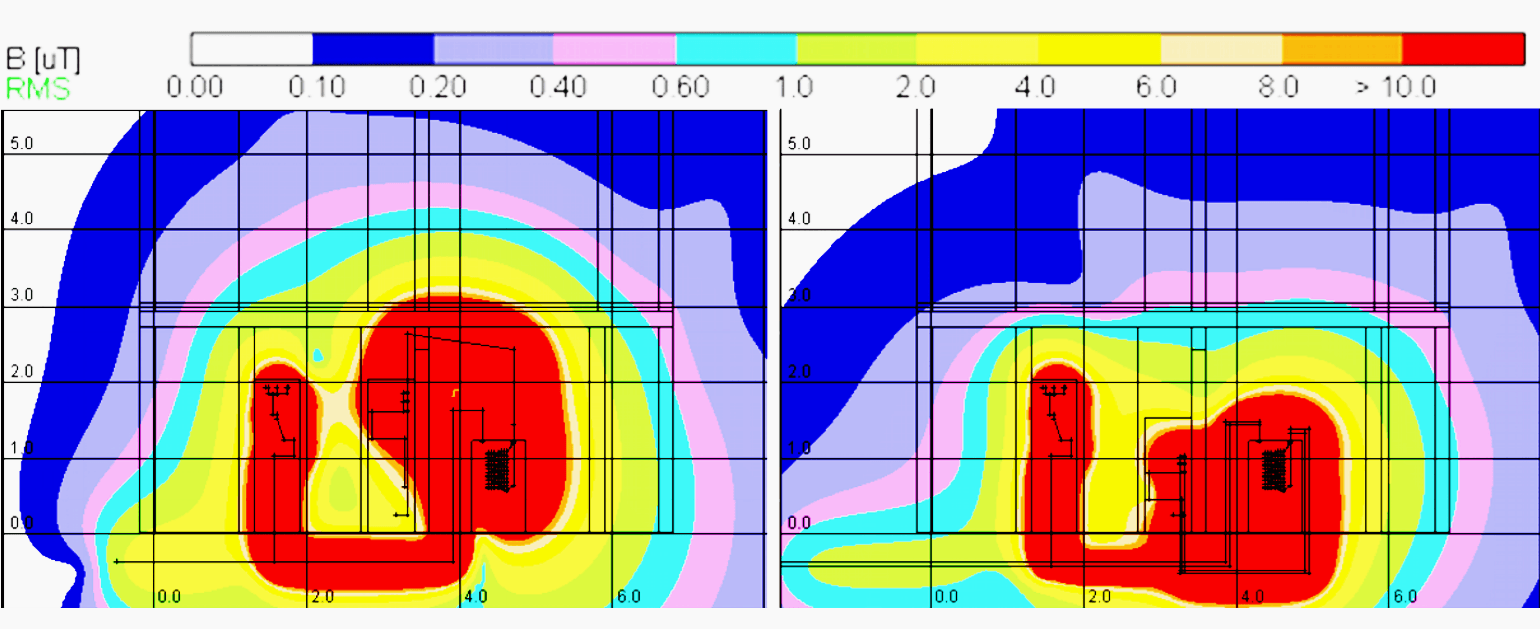

Results of the numerical calculation of the magnetic flux density in vertical plane through LV busbar before (left) and after the reconstruction (right). The current in the LV busbar is 909 A.


Spot measurements after the reconstruction
To verify the findings of the numerical calculations measured the magnetic flux density after the reconstruction on the same locations as before the reconstruction (Figure 2). During the measurements after the reconstruction, the current load was slightly higher current: before it was about 100 A, after it was about 160 A.
In Table 4 where the values of the magnetic flux density are given for the measurements before the reconstruction (second column) and after it (third column). The ratio between both measurements showing the reduction of the magnetic field in the apartment above TS, given in the fourth column, therefore slightly underestimate the effectiveness of the reconstruction, as the current load was 1.6 times higher during the measurements after the reconstruction.
Table 4 – Measured magnetic flux density in the apartment above the TS
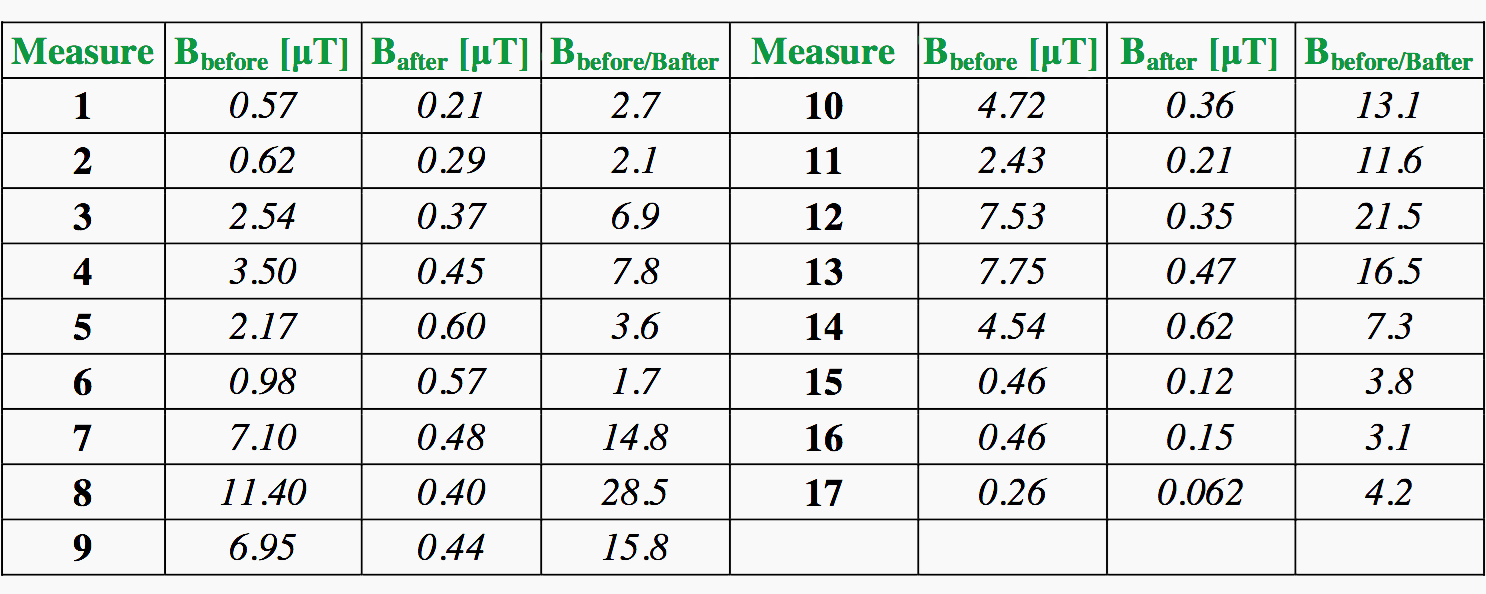

Discussion and conclusions
We analyzed the magnetic field in the apartment above the TS before the reconstruction. With numerical calculations the reconstruction was optimized in terms of cost effectiveness and the goal to reduce the levels of the magnetic field in the apartment above the TS.
To further lower the magnetic field in the apartment it will be necessary to either change the transformer with a one with reduced magnetic field emissions or to use shielding materials for ELF magnetic field. Shielding materials are either good conductors (aluminium or copper plates) or have high permeability.
With shielding materials it is possible to reduce the magnetic field for a factor of 5 or even more, but these solutions are associated with much higher costs compared to the proposed one.
Authors: BLAŽ VALIČ and PETER GAJŠEK (INSTITUTE OF NON-IONIZING RADIATION, POHORSKEGA BATALJONA 215, 1000 LJUBLJANA, SLOVENIA)
References:
- IARC. (2002) Non-ionizing radiation, Part 1: Static and extremely low-frequency (ELF) electric and magnetic fields. IARC Monogr Eval Carcinog Risks Hum 80:1–395. Lyon, France
- Ahlbom A, Day N, Feychting M et. al. (2000) A pooled analysis of magnetic fields and childhood leukaemia. Br J Cancer 83:692–698
- Greenland S, Sheppard AR, Kaune WT et. al. (2000) A pooled analysis of magnetic fields, wire codes, and childhood leukemia. Childhood Leukemia-EMF Study Group. Epidemiology 11: 624–634
- Kheifets L, Repacholi M, Saunders R et. al. (2005) The sensitivity of children to electromagnetic fields. Pediatrics 116:303–313
- Swanson J, Kheifets L (2006) Biophysical mechanisms and the weight of evidence for EMF. Radiat Res 165:470–478
- Schuz J (2007) Implications on protection guidelines from epidemiologic studies on magnetic fields and the risk of childhood leukemia. Health Phys 92:642-648
- Ilonen K, Markkanen A, Mezei G et. al. (2008) Indoor Transformer Stations as Predictors of Residential ELF Magnetic Field Exposure. Bioelectromagnetics: 29: 213-218
Copyright Notice
This technical article is protected by U.S. and international copyright laws. Reproduction and distribution of PDF version of this technical article to websites such as Linkedin, Scribd, Facebook and others without written permission of the sponsor is illegal and strictly prohibited.© EEP-Electrical Engineering Portal.
Related electrical guides & articles
Premium Membership
Edvard Csanyi
Hi, I'm an electrical engineer, programmer and founder of EEP - Electrical Engineering Portal. I worked twelve years at Schneider Electric in the position of technical support for low- and medium-voltage projects and the design of busbar trunking systems.I'm highly specialized in the design of LV/MV switchgear and low-voltage, high-power busbar trunking (<6300A) in substations, commercial buildings and industry facilities. I'm also a professional in AutoCAD programming.
Profile: Edvard Csanyi

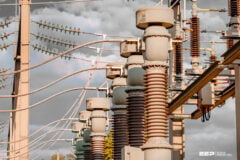
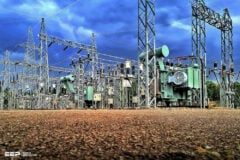
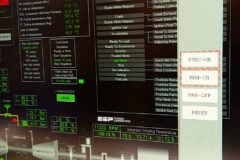
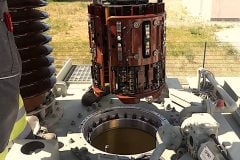
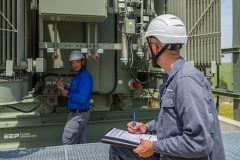





The 4G or 5G antenna installed at roof top of the condominium even has greater effects to our physical or mental health.
How safe if to have a pad transformer in your front yard of your house. Would you buy the house with a Pad Transformer about 10 feet from your house?
That study referenced regarding childhood leukemia should be studied more carefully, the conclusions drawn are so far fetched it is laughable and should not be considered by any logical thinking person as being anything worthy taking cognisance of. The cases referred to occur just as frequently in other areas not near powerlines, just as much as cases that also occur in the same areas of magnetic influence, hence the conclusions drawn only say that the eectromagnetic fields “MAY” lead to childhood leukemia. There is absolutely zero conclusive evidence that low frequency electro magnetic fields have any physical influence on the human body.
For many years it has been know that the magnetic and electrostatic fields actually effect the membrane surrounding the Brian.
This is dependant on the frequency and field intensity.
These studies were conducted during the second world war.
Are we trying to reinvent the wheel?
I have been working in a building for over 16 years where a transformer is right below my office. Being so near to it for so many years, would this affect my health in any way?
Edvard, koszonom a cikket, erdekes volt. Laszlo
Really nice
Placing an inhabited apartment immediately above a substation obviously isn’t ideal (Low-frequency hum among other things). The architect should have considered using this level for storage or workshop space. But if the substation must be located adjacent to living quarters, it would justify the expense of a ‘mumetal’ or similar screen below the floor of the living area – it wouldn’t need to enclose the substation completely.
If properly earthed, it would of course also provide electrostatic shielding – though that shouldn’t be an issue at normal distribution voltages of <20 kV.
Edvard,
Thanks so much for the excellent reference and Get PDF button!
Years ago had similar problem with non twisted control wires and large Ampacity feeder. in order to reduce EMI I did a belt and suspender approach. Placed an aluminum plate at the crossover and increased the distance between the conductors.
never heard from the from the operating engineers.
God bless.
Hi there,
Very interesting article on transformer magnetic fields. My question is: how will this affect people with cardiac pacemakers? I’m an electrician, and I have a pacemaker. What is a safe distance from an energized transformer.
Look forward to your reply.
Thanks.
I must say that I really don’t know. I doubt anybody has an answer on this I must admit – very important question. As far as I know, high voltage transmission lines can harm you on some close distances if you have pacemaker, but LV, I’m not sure.
Mr Edvard please send me example of numerical calculus.
THANKS YOU